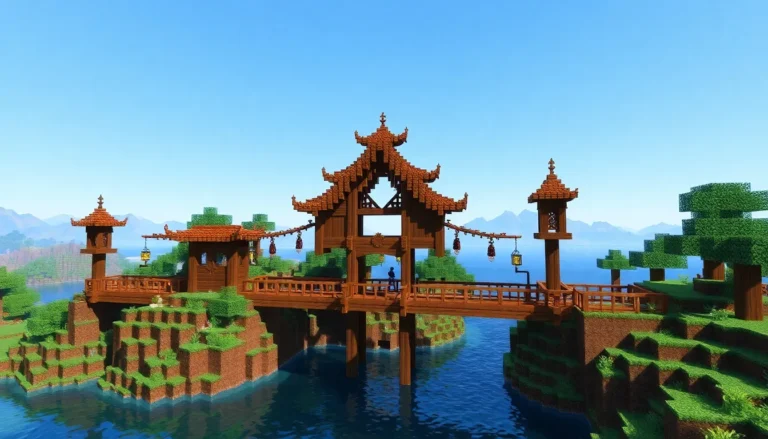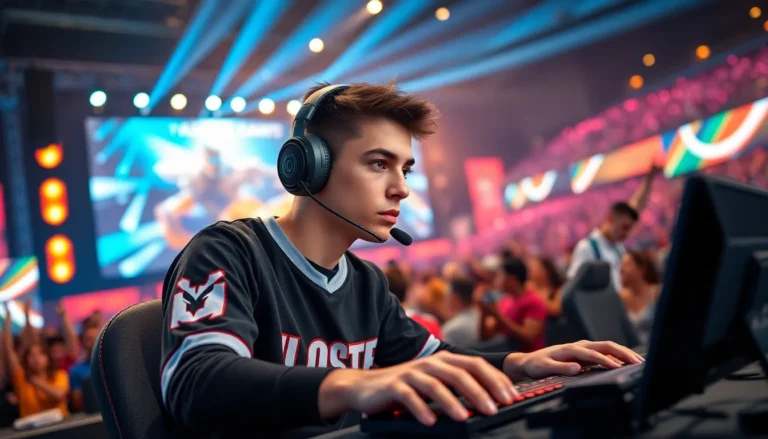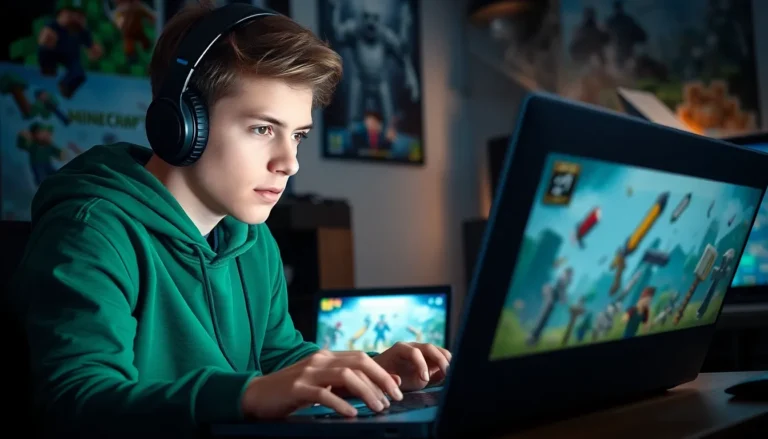Climbing the VALORANT ranked ladder is like navigating a chaotic amusement park—thrilling, unpredictable, and occasionally filled with players who seem to have forgotten that teamwork exists. Whether you’re a radiant sharpshooter or a bronze brawler, the ranked system offers a wild ride that tests skill, strategy, and patience.
Table of Contents
ToggleOverview of VALORANT Ranked Ladder
The VALORANT ranked ladder presents players with a structured competitive environment. Skill ratings determine a player’s rank, which ranges from Iron to Radiant. Each rank consists of several divisions, providing finer progression metrics. Players encounter various challenges that test their ability, teamwork, and strategy in matches.
Team dynamics significantly impact a player’s success. Cooperation among teammates often equates to better match outcomes. Disparate levels of experience within a team may lead to mismatches, affecting overall performance. Communication tools facilitate coordination, yet players frequently experience issues with uncooperative teammates.
The ranked ladder also features placement matches. These initial games assess a player’s skill level, placing them into an appropriate rank. Players may face fluctuating ranks based on match performance. A winning streak generally leads to rank promotions, while continuous losses may cause demotions.
Ranking up requires commitment and consistency. Players must refine their skills through practice and understanding game mechanics. Learning map layouts and mastering agents are crucial elements for improvement. Players often analyze past matches to identify strengths and weaknesses, enhancing their gameplay strategies.
Rewards exist for climbing the ranks, including cosmetic items and accolades. Competing at a higher rank not only offers prestige but also attracts more skilled teammates. Engaging with the ranked ladder becomes an essential part of the VALORANT experience, showcasing individual growth and competitive spirit.
Competitive Structure
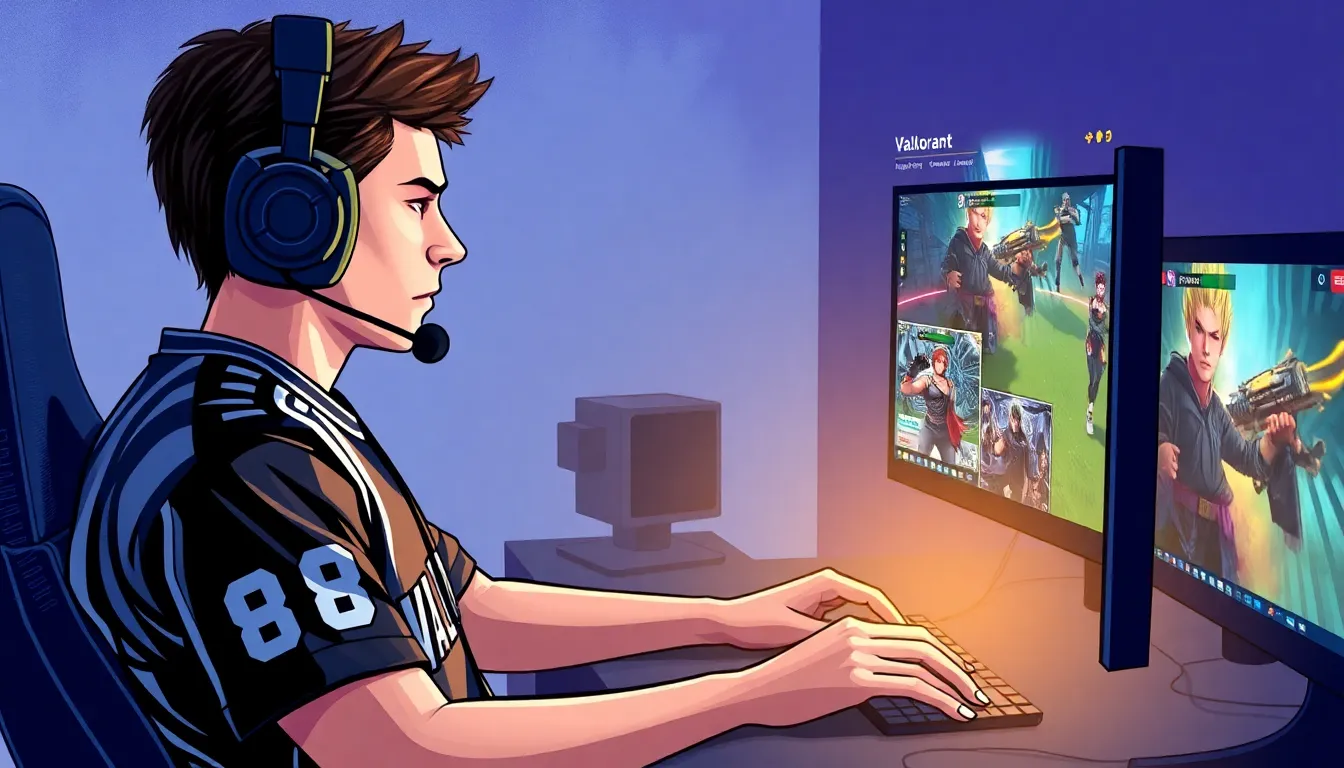
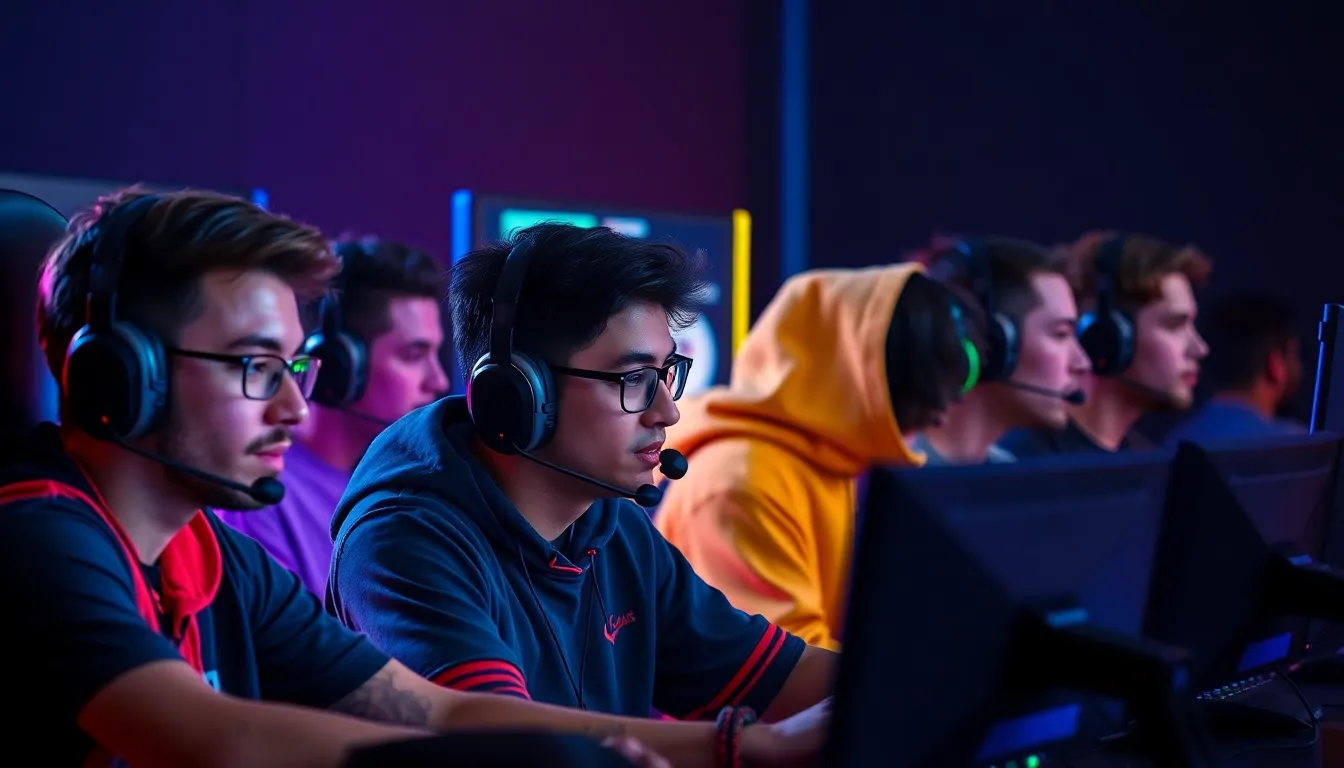
VALORANT features a structured competitive framework that impacts player experience and progression. Understanding ranks and how the matchmaking system operates is essential for success.
Ranks and Tiers
Ranks in VALORANT range from Iron to Radiant, encompassing several tiers for nuanced skill assessment. Players progress through Iron, Bronze, Silver, Gold, Platinum, Diamond, Immortal, and Radiant. Each rank consists of three divisions, apart from Radiant, which has only one. Skill rating calculations consider individual and team performance to determine player placement. Performance in placement matches significantly influences initial ranking, and players experience fluctuations based on game outcomes. Achieving higher ranks requires mastery of game mechanics, communication, and teamwork.
Matchmaking System
VALORANT employs a matchmaking system designed to create balanced teams for competitive gameplay. Ranked matchmaking prioritizes players’ skill ratings to ensure enjoyable matches. Players are paired with teammates who possess similar skill levels, enhancing cooperation and strategic play. The system factors in player performance, account age, and match history for optimal team compositions. An efficient matchmaking experience often leads to more engaging and competitive matches, contributing to the overall enjoyment and growth in skill. Regular adjustments to the system improve match quality and player satisfaction.
Gameplay Mechanics
Understanding gameplay mechanics is essential for climbing the VALORANT ranked ladder. Key elements include team composition and communication strategies which significantly affect match outcomes.
Team Composition
Team composition shapes the dynamics of each match. Selecting diverse agents balances offense and defense. It’s crucial to have a mix of duelists, controllers, initiators, and sentinels to handle various situations. Players often optimize their choices based on map layouts and opponent strategies. Synergy among agents can lead to powerful combinations, allowing teams to execute effective strategies. An adaptable lineup can also counter enemy formations, increasing the chances of victory.
Communication Strategies
Effective communication fosters cooperation and improves in-game performance. Players should use voice chat or text to convey information quickly. Pings can highlight enemy locations or strategies without unnecessary chatter. Sharing plans and adjusting tactics on the fly keeps the team aligned. Positive reinforcement also boosts morale, encouraging players to collaborate. Efficient communication minimizes confusion and maximizes strategic plays, leading to better match outcomes. Prioritizing clear communication builds a more cohesive unit in the competitive environment.
Tips for Climbing the Ladder
Climbing the VALORANT ranked ladder requires strategic focus and practical skills. Players can enhance their performance through individual skill improvement and effective team play techniques.
Individual Skill Improvement
Mastering game mechanics stands as a priority for any player. Analyzing previous match footage helps identify weaknesses and focuses on improving tactics. They can practice aim and movement in the shooting range, sharpening reflexes and accuracy. Understanding agent abilities and map layouts also enhances strategic options. Players should spend time learning crosshair placement and movement mechanics, boosting their effectiveness during engagements. Engaging with other players or coaches for tips can provide new insights and facilitate personal growth. Building personalized training routines ensures consistent improvement over time.
Team Play Techniques
Successful teams rely on effective communication and composition. Players must clearly convey information using voice chat and pings to maintain alignment. Selecting a diverse mix of agents allows for flexible strategies and counters against opponents. Teams thrive when roles—such as duelists for entry fragging or controllers for area denial—are respected. Prioritizing positive reinforcement among teammates fosters a collaborative atmosphere. Practicing strategic plays together during scrimmages enhances synergy and prepares players for competitive matches. Understanding when to rotate and when to regroup strengthens team dynamics, leading to better match outcomes.
Common Challenges
Climbing the VALORANT ranked ladder presents several challenges that players encounter throughout their journey. Teamwork often proves difficult, as mismatched skill levels among players can disrupt strategies. Communication barriers arise when players fail to share crucial information, leading to confusion during critical moments.
Players frequently experience rank fluctuations, which can be frustrating. The performance in placement matches significantly dictates initial rankings, but inconsistent gameplay can hinder progress. Misunderstanding map layouts or agent abilities contributes to mistakes, causing detrimental effects in matches.
Additionally, time commitment surfaces as a challenge. Players must dedicate hours to practice and refine skills, especially in aim and movement. Balancing casual play with ranked games complicates improvement, as players may lose focus on their goals.
Analyzing previous matches poses another hurdle. While reviewing gameplay is essential for learning, players may struggle to identify areas for improvement. Shifting mindsets from wins or losses requires resilience, often demanding a strong mental fortitude.
Adaptability remains critical in VALORANT. New strategies and meta changes frequently emerge, requiring players to adjust tactics continuously. Failing to adapt can lead to poor performance and a lack of success on the ranked ladder.
Lastly, the pressure to perform can affect players’ decision-making. High-stakes matches may lead to anxiety, impacting gameplay and communication. Cultivating a positive mindset becomes vital for maintaining focus and resilience amidst the challenges of climbing the ranks.

